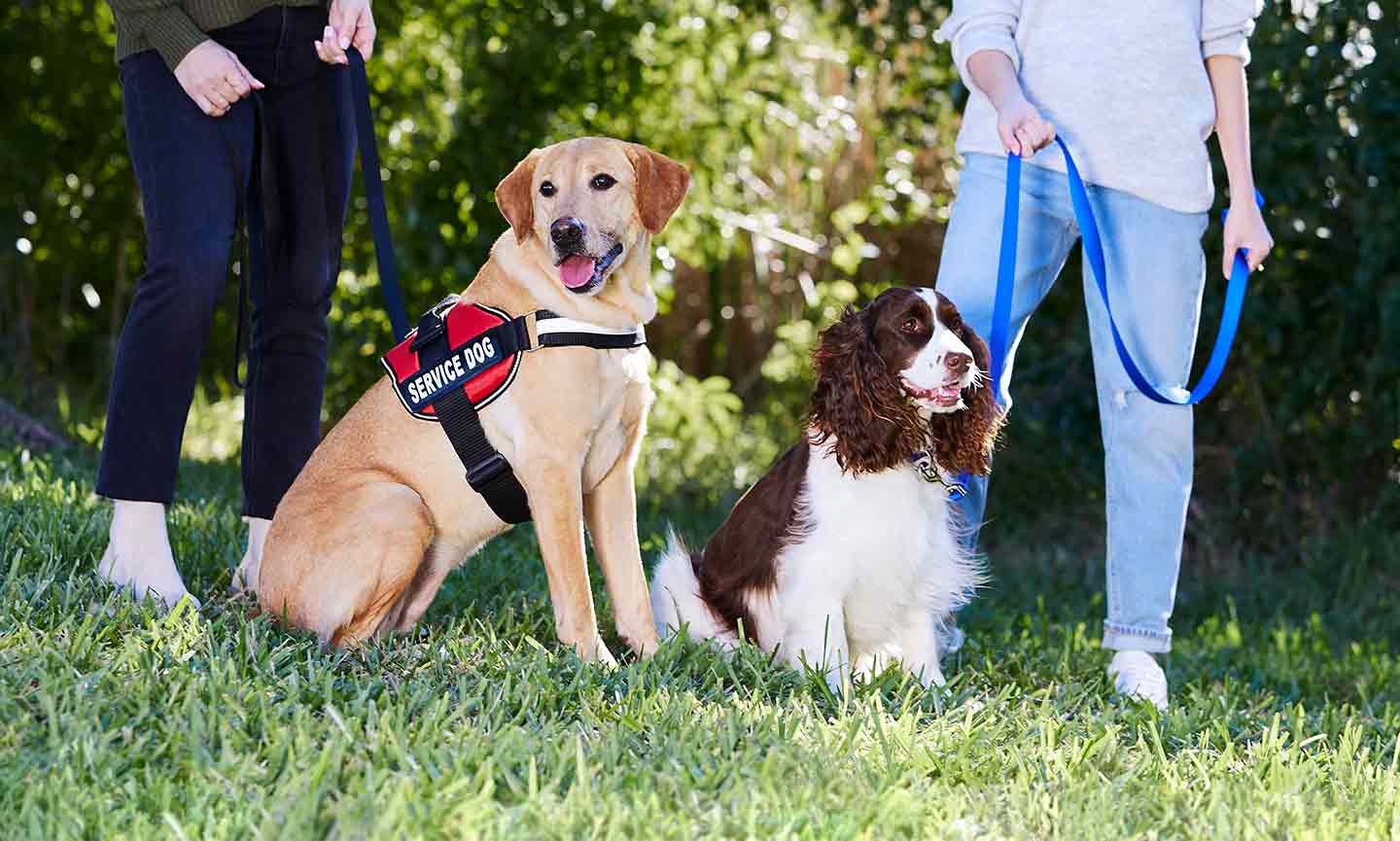Service Dogs vs. Emotional Support Dogs: What Every Pet Owner Should Know
If you’ve ever relied on your dog for comfort, security, or emotional stability, you’re not alone. Dogs are more than pets — they’re companions, protectors, and, for many people, lifelines. But for individuals with diagnosed disabilities or mental health conditions, dogs can also serve an official role as a service dog or emotional support dog.
Whether you’re wondering if your dog qualifies, or you’re exploring how to document your animal for easier access to housing or travel, understanding the difference between service dogs and emotional support dogs is essential.
What’s the Difference Between a Service Dog and an Emotional Support Dog?
A service dog is specially trained to perform tasks for a person with a disability. These tasks can include guiding someone with low vision, alerting a person with epilepsy before a seizure, reminding someone to take medication, or physically interrupting anxiety symptoms.
On the other hand, an emotional support dog is not task-trained, but still plays a valuable role in a person’s mental health. Emotional support dogs are commonly used by people with anxiety, PTSD, depression, or panic disorders. Just having the dog present offers therapeutic benefits — lowering stress levels, increasing feelings of safety, and easing isolation.
While both types of dogs are incredibly helpful, they’re treated differently under the law.
Legal Protections and Access
Service dogs are protected under the Americans with Disabilities Act (ADA), meaning they can legally accompany their handler in public places like restaurants, stores, buses, and airplanes.
Emotional support dogs, however, are not granted public access under the ADA. They’re protected under the Fair Housing Act, which means landlords must allow them even in “no-pet” buildings — as long as the owner has proper documentation from a licensed mental health professional.
Why Dog Owners Choose to Register or Certify
Legally, service dogs don’t require any registration, ID card, or certificate. But in real life, things are rarely that simple. Handlers are frequently asked for proof — especially when traveling, flying, or trying to access housing.
That’s why many people opt to get service dog certification. While not required by law, certification can help reduce conflicts, offer a professional presentation when questions arise, and make things easier in public or with skeptical landlords.
Certification typically includes a digital and physical ID card, a printable certificate, and online verification — all of which help clarify that your dog is working and legally protected.
The Practical Perks of Service Dog Registration
Some dog owners also choose to pursue service dog registration. It’s a simple way to officially list your dog in a registry, often paired with an ID badge and scannable QR code that can be shown on your phone or wallet.
This kind of documentation isn’t about proving yourself — it’s about protecting yourself from unnecessary hassle. It tells gatekeepers that you’ve taken steps to clarify your dog’s role and that you’re not trying to abuse the system.
Registration is particularly helpful for people who are still training their service dog or those who want extra peace of mind when traveling or facing difficult conversations in public.
Emotional Support Dog Registration for Housing Rights
If your dog helps you cope with stress, anxiety, or emotional trauma, they may qualify as an emotional support dog. But to be protected under the Fair Housing Act, you’ll need a letter from a licensed mental health professional stating that the dog is part of your treatment plan.
Many people choose to supplement their letter with emotional support dog registration. This adds an extra layer of legitimacy when dealing with landlords or housing offices. It includes a certificate, digital documents, and an optional ID card that can be presented along with your ESA letter.
While it’s not legally required, having official-looking documentation can help you avoid back-and-forth arguments with property managers and protect your housing rights.
A Real-World Example: Why Documentation Matters
Take Sarah, a college student who adopted a Labrador named Milo to help her cope with severe social anxiety. Milo wasn’t trained to perform a specific task, but just his presence kept Sarah grounded. She got an ESA letter from her therapist, but her apartment complex still pushed back, demanding more proof.
With an emotional support dog registration and a clear record she could show in person or by email, Sarah was able to settle the issue quickly — without legal threats or stress.
Or consider James, a veteran with PTSD. His service dog, Ranger, is trained to wake him from night terrors and stand between him and strangers in public. Despite being protected by law, James was regularly questioned by staff when entering stores. After getting his service dog certification and carrying a digital ID, those conversations stopped.
Final Thoughts
At the end of the day, your dog isn’t “just” a pet — they’re part of your care system, your confidence, and your sense of security. Whether you need help getting housing approval, traveling with less stress, or reducing awkward public encounters, documentation can go a long way.
By understanding the difference between service dogs and emotional support dogs — and taking steps to certify or register when appropriate — you’re not only protecting your rights, you’re strengthening the bond between you and your dog.
Because every good dog deserves to do their job without interruption — and every good human deserves the support to live freely.







